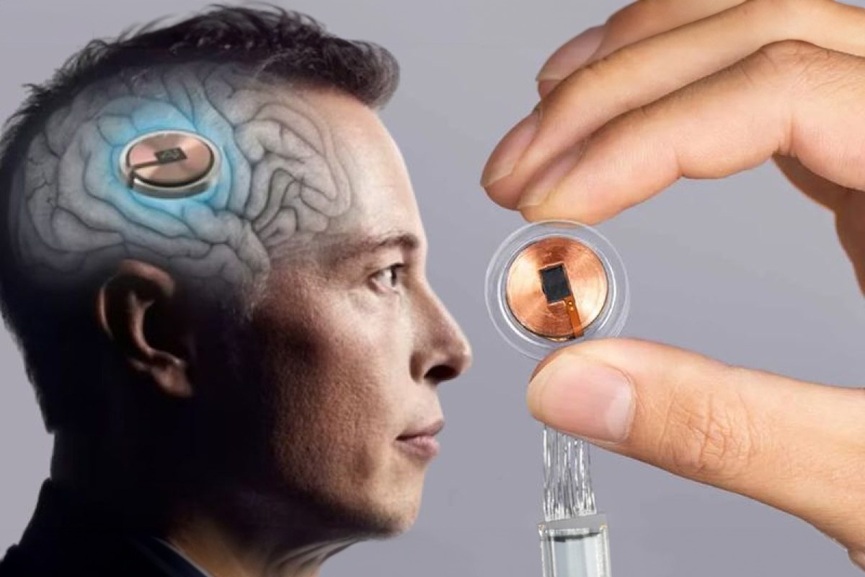San Francisco: Elon Musk’s neurotechnology company, Neuralink, is moving rapidly toward reshaping the future of human-computer interaction.
The ambitious project envisions a world where people can control digital devices with their thoughts, restore lost senses, and even communicate brain-to-brain, all through a tiny chip implanted in the brain.
Founded in 2016, Neuralink’s goal is to build a high-bandwidth brain-computer interface (BCI) that bridges the gap between the human brain and artificial intelligence (AI). In 2025, the company reached a milestone by successfully implanting the device in its ninth human subject, as per its official website.
Neuralink’s core device is a brain chip capable of reading and interpreting brain signals through more than 1,000 electrodes, which allow users to control digital devices such as smartphones or computers using only their thoughts.
Early trials have enabled paralysed individuals to browse the internet, move cursors, and type at speeds of up to 25 words per minute, simply by thinking.
Musk has said that the long-term goal is to enable “superfast brain-machine communication,” where users can interact with machines at the speed of thought, potentially revolutionizing how humans work, learn, and connect.
Watch the latest update from the Neuralink team. pic.twitter.com/mQzpTehqov
— Neuralink (@neuralink) June 27, 2025
Helping the Disabled
One of Neuralink’s primary missions is to help people with severe medical conditions. The chip is already being used to help people with paralysis interact with digital devices, and trials are now underway to restore vision in people suffering from ‘blindsight, a condition that causes blindness despite a healthy eye structure.
In the future, Musk envisions Neuralink helping people regain full body movement after spinal cord injuries or neurological diseases, offering hope to millions who have lost motor function.
Beyond movement and communication, Neuralink’s potential to enhance memory and learning is a major focus. According to Musk, future versions of the chip could allow people to instantly recall information, store memories digitally, or even “download” new skills such as learning a language directly into the brain.
Such capabilities are being explored not only as futuristic enhancements but also as therapeutic tools. Scientists are testing if the device can support memory functions in Alzheimer’s or dementia patients, potentially offering breakthroughs in brain health.
Perhaps the most far-reaching vision Musk shares is Neuralink’s potential to connect humans directly with artificial intelligence systems. The fear of humans falling behind rapidly evolving AI capabilities is a key driver for Musk, who believes Neuralink could enable seamless interaction between humans and machines.
Today, @Neuralink released a special update that recognized PRIME Study patients’ contributions to research. Of the seven individuals who have received the company’s N1 Implant so far, six underwent the procedure at #BarrowNeurologicalInstitute in #Phoenix, #Arizona.
The N1… pic.twitter.com/SwgrerQ9bv
— BarrowNeurological (@BarrowNeuro) June 27, 2025
One speculative but fascinating concept is brain-to-brain communication, the ability to send messages, thoughts, or even memories from one person to another without speaking or typing.
Neuralink is also being tested as a therapeutic tool for neurological and psychological conditions. Initial uses target epilepsy, Parkinson’s disease, and depression, where the chip can both monitor brain activity and deliver targeted electrical stimulation to treat or prevent symptoms like tremors or mood swings.
The vision is to allow the brain to eventually self-repair, with real-time adjustments made through AI-assisted therapies prescribed by doctors.
A Superhuman Future?
Though still experimental, Neuralink’s technology is advancing rapidly. With surgical robots, upgradable chips, and ongoing global trials, the company is laying the groundwork for what Musk believes will eventually benefit millions.
While ethical concerns and safety questions remain, there’s no denying Neuralink is charting a bold course toward a future where the line between biology and technology becomes increasingly blurred.
























